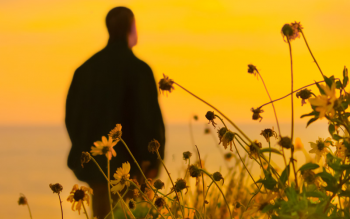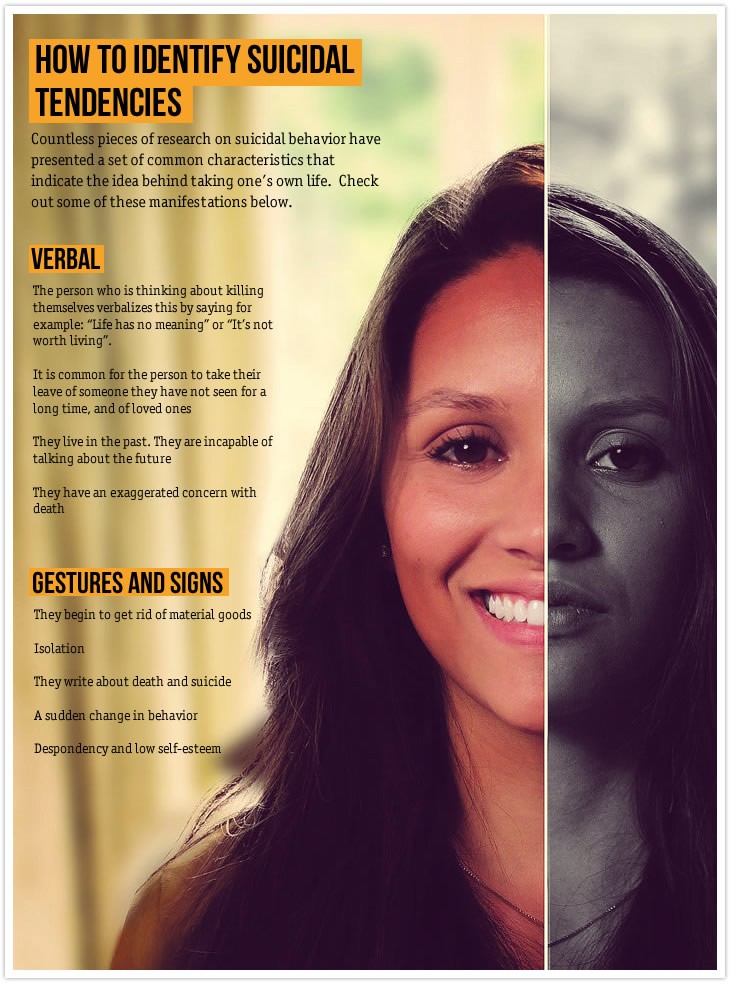Preventing suicide: fighting for life is always better
Suicide, which causes one million deaths per year worldwide, must be fought urgently.
By the Editorial Staff
Saturday | May 03, 2014 | 10:38 AM | Last update: September 22, 2016, 4:07 PM (Brasilia time)

The estimated number of one million suicides per year, according to the World Health Organization (WHO), is very worrying. There are 24 suicides a day, on average, in Brazil. This number is equivalent to 9,000 deaths a year and considered high, since AIDS, for example, is the cause of a little over 10,000 deaths. According to the “Map of Violence 2011” report, prepared by the Sangari Institute and the Ministry of Justice, the rate of suicides in Brazil among young people exceeds that of adults, unlike what happens in most countries. In the 1998-2008 period the indices grew by 17%.
To show the seriousness of the problem in the world, in comparison with local data, psychiatrist Dr. José Manoel Bertolote, a professor from the Department of Neurology, Psychology, and Psychiatry of the Universidade Estadual Paulista Júlio de Mesquita Filho (UNESP, São Paulo State University) and a consultant for the WHO on the topic, recently presented some facts illustrating this. “Botucatu today has 130,000 inhabitants. Every year, worldwide, approximately seven cities like Botucatu commit suicide,” was the comparison he gave. It is worth observing that this survey did not consider data relating to those who make attempts to take their own life, the rates of which are 40 times greater in the United States, for example, than those who succeed in committing suicide.
Based also on studies from the WHO, the specialist points to a worrying finding: young people are increasingly more likely to adopt suicidal behavior. It is already the third most common cause of death among economically active individuals in the age group between 15 and 44 years old and the second main cause of death among young people aged between 15 and 19. Another segment that requires care are the elderly, among whom the growth in suicide rates is related to the abandonment and solitude in which many of these people live, sometimes weakened by chronic and degenerative diseases.
In Dr. Bertolote’s opinion, any illness that duplicates every 20 or 30 years would demand drastic measures from the authorities. “This has not happened in Brazil. Some studies show that if we take young people, aged between 15 and 25, [we shall note that] the increase in suicide over the last 20 years is even greater. There’s a brutal increase in suicide among young males,” he commented.

Author of the recently launched O suicídio e sua prevenção [Suicide and its prevention], the book has information and strategies for preventing the problem. Dr. Bertolote cites studies from several countries that have presented the most common risk factors. In addition to alcoholism and drugs, “behind 90% of the suicides in the Western world is a mental disorder (mainly depression and schizophrenia).”
Given the risk factors we need to be alert in order to provide solidary support. “That’s what we have to do. We have to get closer to those who are showing signs that something is not right. It may be uncomfortable. We ask: ‘How are you?’ and no one really wants to know, because it’s just a form of politeness. Sometimes the person says: ‘Oh, I’m fine’, but they’re rotten inside... Now, if you say to them: ‘Look, I see that you’re not well. Can I do something? Can I help?’, then, perhaps you’ll have to leave what you’re doing and accompany this person some place, but you’ll be able to save a life.”
SUFFERING
Information is fundamental in the task of preventing cases of suicide. This is the opinion of PhD in Psychology Dr. Blanca Susana Guevara Werlang, a full professor at the School of Psychology of the Pontifical Catholic University of Rio Grande do Sul (PUC-RS) and coordinator of the Prevention and Intervention in Violent Behavior Group at PUC, Brazil. “People don’t have information about suicide. There are many taboos surrounding the subject. If education professionals, for example, had more knowledge about risk factors—which are the protecting factors, which behaviors may denounce this—, they could also help. They could talk to the family. They could send the person to a psychologist, a psychiatrist, or another specific public health sector,” she said.
Dr. Blanca Werlang stresses that studying suicidal behavior is also discussing the question of suffering. “These individuals suffer a lot. Sometimes the idea is not to die, but just to put an end to this unbearable pain.” According to the specialist, faults occur in personal psychological development: “The person begins to accumulate psychological tension, psychological suffering. If they communicate little with others, if they have family problems, if there’s no link with a spiritual reference point, whatever that may be, or if they have few friends, they end up suffering a lot.”
Considered to be a psycho-social disturbance with multiple causes, suicide is a complex event. “It’s not just because a person has a depressive disturbance that they’re going to commit suicide. There are social, economic, family, and spiritual factors involved. The combination of all these elements is what actually leads a person to become psychologically disorganized and to internalize this intolerable suffering.”
The psychologist also demonstrates concern with the high rates of this type of occurrence in the younger population. Dr. Werlang understands that the important factor here is a lack of reference. “The feeling we get is that the family transfers the responsibility to the school and the school to the family. Society doesn’t take responsibility either. The public representatives are all very mixed up. (...) Today the values of fraternity, spiritual values, the question of not harming others, of lending and dividing things with one’s neighbor, they’re all forgotten. Being religious is a protective factor, as is having good family relations,” she explained.
IMPACT ON FAMILY AND FRIENDS
The death of someone who has decided to abandon life is usually difficult for the family and friends to overcome. Journalist Paula Fontenelle experienced this reality at first hand: her father committed suicide in 2005. In her search for answers, she dedicated three years of her life researching the subject, studying various cases, and interviewing psychologists and other specialists. The result of this work is her book Suicídio, o futuro interrompido — Guia para sobreviventes [Suicide: the future interrupted – A guide for survivors].
In her work the author proves the importance of paying attention to the people who are close to those who committed this act of despair and the need to break the silence that surrounds them. “In the literature of this field of study they call those who lose someone to suicide a survivor, because they’re the individual who’s going to have to live with that for the rest of their life and survive the pain of this loss, which is a different pain... When you lose a person because of an accident, a disease, or through natural causes, you talk about it to everyone and everybody asks what it was like. Talking about it is part of the mourning process. But when it’s suicide, no one asks. No one wants to hear about it. (...) I remember that our family went through this.”
The journalist also believes that, to a certain extent, the aggression of the act reverberates in those who are closest. “When the person dies it’s normal to be frightened. You don’t believe they did that. Later you begin to feel that you’re to blame: ‘How is it that I didn’t notice?’. The feeling of guilt is normal and anger too.... ‘How could they do this to me? They were irresponsible. How can they do this to their own child?’”
In sounding the alert, the book indicates the main signs of suicidal behavior in order to help fight it. “Faith is very important. It’s one of the crucial factors that gives support to some people. Faith in God, in a Superior Being, regardless of the religion you practice, is a type of support very much like the support of a person who gives you their hand. Faith is believing in the future; believing always that that [pain and suffering...] is going to pass.”

In the case of a loved one who is manifesting such signs, she recommends first opening a channel of communication and paying attention to them. Then try and understand and make it easy for them to get things off their chest. “Another very important thing that doctors also say is to try and make a type of pact with the person: ‘Look, give me a month for us to see if you’re going to get better or not. That’s all I’m asking’. I did this with a friend of mine... I took her to a psychiatrist and she’s still alive today.”
THE POWER OF PRAYER
A feeling of religiousness has been a valuable ally in helping those who suffer recover their self-esteem and will to live. It has been proved that praying and meditating are capable of helping restore the equilibrium of the body and soul and the fact that the person belongs to a religious community in itself represents a very favorable social support at times of intense suffering.
The President-Preacher of the Religion of God, of the Christ, and of the Holy Spirit, Paiva Netto, says that at times of difficulty, when it seems that certain issues have no way out, he resorts to prayer and as a result he gains the strength he needs to overcome the obstacles. In his article “Atheists can also pray”, he points out: “Prayer is not a refuge for cowards or the idle. It elevates us; and work provides us with a feeling of achievement. The Pope prays. The Dalai Lama meditates. Chico Xavier prayed. Rabbis chant their prayers and evangelicals sing their praises to God. Muslims recite the Holy Koran... What is Prayer if not Love that is willing to undertake great feats? When an atheist brother carries out an act that benefits society he is praying. Praying is not simply a figurative action. It is the strongest instrument that the human essence, the Divine Capital, has. As the German Catholic monk Thomas à Kempis (1380-1471) once wrote in The Imitation of Christ: ‘Sublime is the art of talking with God.”
Version: Rob Dinham
Revision: Rosana Bertolin